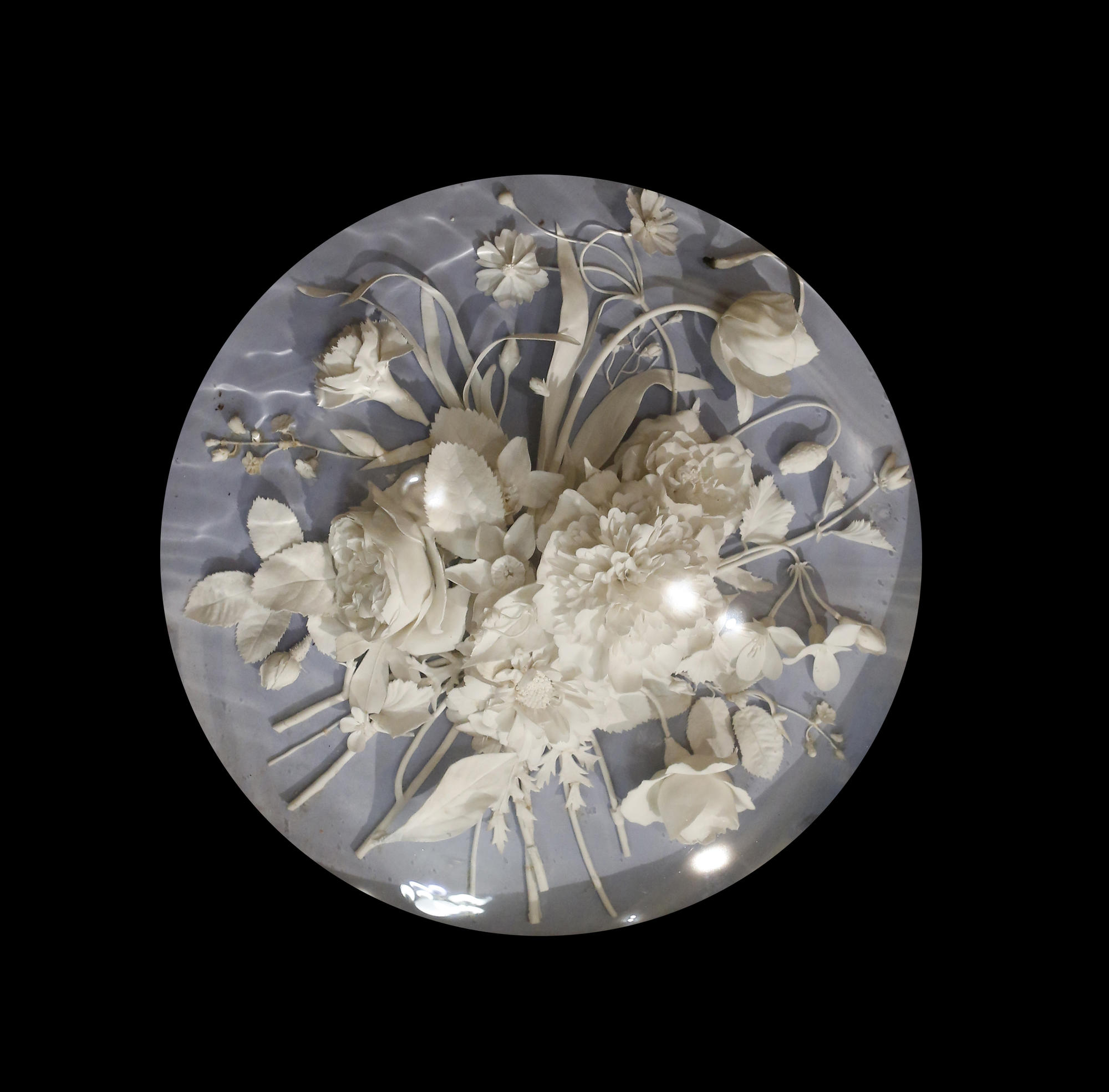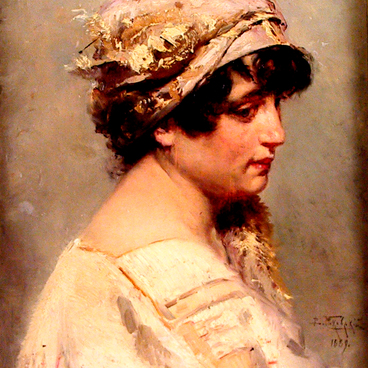Pyotr Ivanov, a master at the Imperial Porcelain Factory and expert in porcelain formulation was born out of wedlock to St. Petersburg merchant Iuda Ivanov and a freed slave Elena Alexeyeva. In 1811, Pyotr with his elder brother Ivan was assigned to the Imperial Porcelain Factory workshop, where he was trained in the art of carving. In 1837, he was given the job of a master and his outstanding performance was rewarded by the silver and gold medals For Diligence on St. Anna Ribbon. In 1835, he married the daughter of a coachman from the Smolensk postal district, Pelageya Gerasimova. His sons, Ivan and Andrey also worked as porcelain factory masters. Pyotr Ivanov died from consumption in St. Petersburg.
Master Pyotr Ivanov began manufacturing white biscuit porcelain bouquets on light blue plaques (one such piece is displayed at the exhibition) as of the second third of the 19th century. The term biscuit refers to a piece of ceramic pottery subject to a single firing (or biscuit firing) in the course of manufacture. In the narrow sense of the word, biscuit is unglazed porcelain (as opposed to earthenware or any other type of pottery) which went through one or two firings. The surface of such porcelain is white, mat, and slightly rough like that of quality marble. Its porous texture makes it unsuitable for manufacturing dishware, but since the 18th century biscuit porcelain has been used for making figurines, ornaments, sculptures and other pieces requiring no surface protection by glazing.
Porcelain formulation specially developed by Pyotr Ivanov his for his bouquets stand out for exceptionally high plasticity. His pieces are distinguished by unsurpassed finesse of artistry. After the master’s death, the bouquet manufacturing secret was lost: the factory management failed to find the money to buy it from his widow. The collection of the Kaluga Museum of Fine Arts has a unique piece of art created by Pyotr Iudovich Ivanov, a porcelain bouquet mounted on a light-blue plaque. The bouquet is made up of roses, tulips, carnation, and narcissi meticulously reproducing the shape of each individual flower and leaf, however small. The piece has its own case carrying the stamp of the Imperial Porcelain Factory. The bouquet was bought for the museum collection in 1945.
Master Pyotr Ivanov began manufacturing white biscuit porcelain bouquets on light blue plaques (one such piece is displayed at the exhibition) as of the second third of the 19th century. The term biscuit refers to a piece of ceramic pottery subject to a single firing (or biscuit firing) in the course of manufacture. In the narrow sense of the word, biscuit is unglazed porcelain (as opposed to earthenware or any other type of pottery) which went through one or two firings. The surface of such porcelain is white, mat, and slightly rough like that of quality marble. Its porous texture makes it unsuitable for manufacturing dishware, but since the 18th century biscuit porcelain has been used for making figurines, ornaments, sculptures and other pieces requiring no surface protection by glazing.
Porcelain formulation specially developed by Pyotr Ivanov his for his bouquets stand out for exceptionally high plasticity. His pieces are distinguished by unsurpassed finesse of artistry. After the master’s death, the bouquet manufacturing secret was lost: the factory management failed to find the money to buy it from his widow. The collection of the Kaluga Museum of Fine Arts has a unique piece of art created by Pyotr Iudovich Ivanov, a porcelain bouquet mounted on a light-blue plaque. The bouquet is made up of roses, tulips, carnation, and narcissi meticulously reproducing the shape of each individual flower and leaf, however small. The piece has its own case carrying the stamp of the Imperial Porcelain Factory. The bouquet was bought for the museum collection in 1945.


